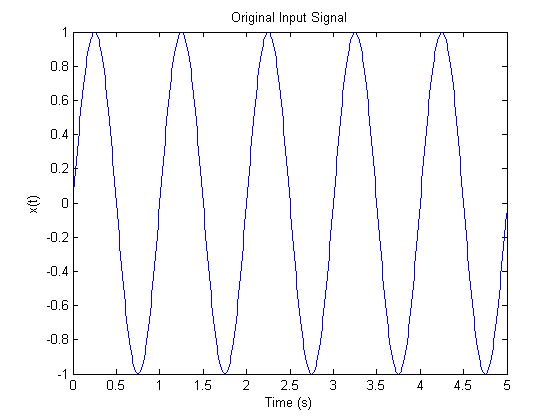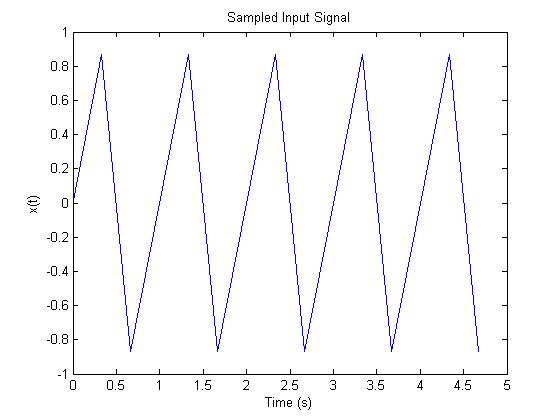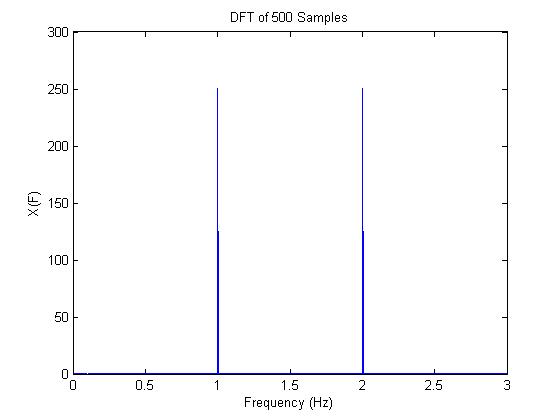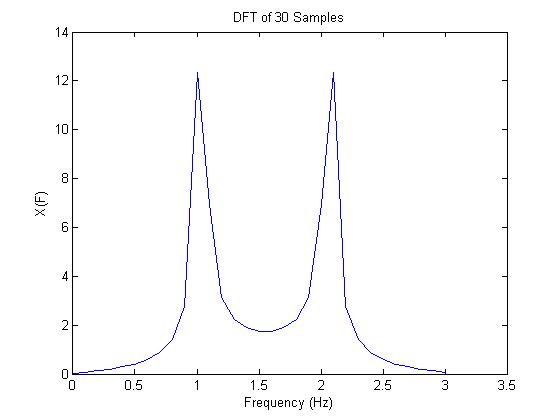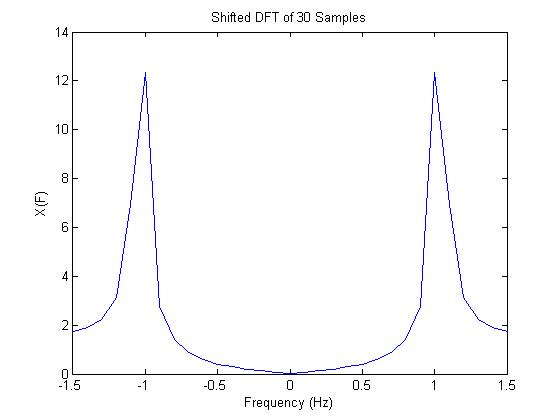DFT Exploration by harrde: Difference between revisions
Jump to navigation
Jump to search
No edit summary |
|||
| Line 69: | Line 69: | ||
[[Image:DH13_5.jpg]] |
[[Image:DH13_5.jpg]] |
||
[[Image:DH13_6.jpg]] |
[[Image:DH13_6.jpg]] |
||
===Explanation=== |
|||
The DFT only gives us an approximation of the actual Fourier Transform, as was found in the last homework. With few sampling points the DFT hardly resembles the expected trasfrom. This is because the edge effects have a greater affect with fewer sample points. But as we increase the number of sample points the DFT more closely resembles the expected transform. |
|||
Revision as of 23:54, 6 December 2007
Problem Statement
Sample at 3Hz, take the DFT, and explain the results.
Solution
Here is the MATLAB code and resulting figures:
f = 3; % Sampling freq.
T = 1/f; % Sampling period
t = 0:.01:5;
N2 = 500; % Number of sampling points
N3 = 30;
t2 = 0:T:N2*T;
t3 = 0:T:N3*T;
x = sin(2*pi*t); % Signal that is sampled
x2 = sin(2*pi*t2);
x3 = sin(2*pi*t3);
X2 = fft(x2); % DFT of long signal
X3 = fft(x3); % DFT of short signal
figure(1) %Original signal
plot(t(1:500),x(1:500))
xlabel('Time (s)')
ylabel('x(t)')
title('Original Input Signal')
figure(2)
plot(t2(1:15),x2(1:15)) % Sampled signal
xlabel('Time (s)')
ylabel('x(t)')
title('Sampled Input Signal')
figure(3) %DFT of long signal
plot(t2/(N2*T*T),abs(X2))
xlabel('Frequency (s)')
ylabel('X(F)')
title('DFT of 500 Samples')
figure(4) % DFT of short signal
plot(t3/(N3*T*T),abs(X3))
xlabel('Frequency (s)')
ylabel('X(F)')
title('DFT of 30 Samples')
figure(5) % Shifted DFT of long signal
XS2=fftshift(X2);
f2=-1/(2*T):1/(N2*T):1/(2*T);
plot(f2,abs(XS2))
xlabel('Frequency (s)')
ylabel('X(F)')
title('Shifted DFT of 500 Samples')
figure(6) % Shifted DFT of short signal
XS3=fftshift(X3);
f3=-1/(2*T):1/(N3*T):1/(2*T);
plot(f3,abs(XS3))
xlabel('Frequency (s)')
ylabel('X(F)')
title('Shifted DFT of 30 Samples')
Explanation
The DFT only gives us an approximation of the actual Fourier Transform, as was found in the last homework. With few sampling points the DFT hardly resembles the expected trasfrom. This is because the edge effects have a greater affect with fewer sample points. But as we increase the number of sample points the DFT more closely resembles the expected transform.

